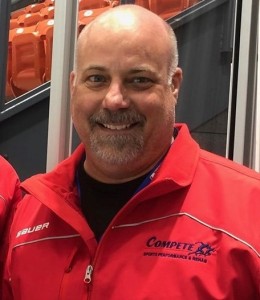From the Trainer’s Room: How to work core stability in a standing position

The term “core stability” has been around for decades.
There are many different aspects of core stability, but to me, we are speaking about the muscles that allow your trunk to flex, extend, rotate, and side bend. They are also the muscles that resist these movements and the muscles that provide support to the pelvis or hips to allow these movements.

CHRIS PHILLIPS
These muscle groups include the abdominals, obliques, paraspinals, and the gluteal group in the hip. These muscles all play a role in stabilizing the trunk so that the arms and legs can perform necessary movements such as running, jumping, cutting, or throwing a ball. This group of muscles allows the trunk to move or resist movement such as shooting a puck or landing a jump in figure skating.
Strengthening these muscles also allows an athlete to be more stable or strong on the field, court, or ice such as warding off an opponent in a soccer game or remaining on your feet after being checked in a hockey game.
We often see core exercises performed on the ground such as sit-ups, planks, and bird dogs, which are all great, but core exercises can and should be performed in a standing position as well.
Utilizing standing core exercises such as a pallof press can be both challenging and functional. A pallof press is performed standing while holding a band with the resistance coming from the side and pressing forward away from your body. The intensity can be modified by placing the athlete in a split stance or changing the press to an up-and-down motion with the arms extended.
Another simple standing core exercise is a banded single-arm row while standing on one leg. While standing on one side and rowing with the other, this exercise creates a rotational force that the athlete needs to resist to remain stable. To intensify this exercise, add a little trunk rotation with each reach and row and feel the burn in your hips while they stabilize your body.
There are endless exercises that can improve core stability which enhances performance while reducing injuries. The takeaway is to incorporate different types of core stability exercises that target multiple muscle groups in multiple positions with some being based on movement and others based on resisting movement.
Chris Phillips is an athletic trainer and strength and conditioning specialist with over 30 years of experience in professional hockey, football, and soccer along with the 2022 Winter Olympics. He is the owner of Compete Sports Performance and Rehab with locations in Orange County. Contact Chris through the Compete website.
(June 2, 2022)










